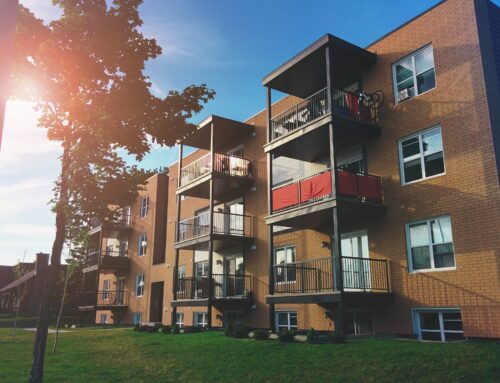Canada expects to welcome about one million new immigrants over the next three years. Many thousands of newcomers will be arriving from overpopulated areas of India and China, as well as politically unstable regions like Sub-Saharan Africa and the Middle East. But a great portion of the newcomers will be coming from right next door. Americans are moving to Canada in great numbers, more than 8,000 of them in the year 2016.
Canada has become an attractive option for Americans for many reasons. The culture is friendly, the politics are relatively civil, and the economy is robust. Furthermore, moving to Canada seems pretty easy for Americans. There’s no ocean to cross, no language barrier to overcome (in most cases), and little or no culture shock to deal with.
Ever since the Vietnam War, significant numbers of Americans have been intrigued by the idea of moving to Canada. Today Americans have other motivations, but for many, the appeal is still strong. And many want to know just what it takes to move to Canada as an American.
Can American citizens move to Canada?
Taking up residency in a foreign country is never simple, but Americans and Canadians enjoy one of the friendliest international relationships on earth. Consider the US-Canada border. At more than 5000 miles, it is the world’s longest international boundary, and totally undefended by military presence.
So unless you have a dubious criminal record, you shouldn’t have a difficult time getting into Canada. In fact, there a several different immigration options to choose from. So the hardest part might be deciding which path is best for you.
Immigration options for short term and temporary stays
If you’re not ready to commit to Canada, American citizens are free to stay in the country for up to six months at a time as tourists without a special visa. This is convenient if you’re maintaining your residence in the States, and it means you can move back and forth with the seasons. But it won’t allow you to work and enroll in Canadian healthcare or social security.
If you’re ready to move to Canada year-round, but not necessarily for the long haul, here are couple options.
- Study Permit: As a student in Canada, you are granted residency, but not the right to work.
- International Experience Canada (IEC) A very popular immigration option, IEC actually offers three different programs. 1) Working holiday: Probably the best choice for nomads and freelancers. Participants receive an open work permit for 1-2 years, allowing them to move around and look for work anywhere in Canada. 2) Young professionals: With a signed job offer, participants can work for a single Canadian company and gain valuable international experience in their field. 3) International co-op internships: Open to students of post-secondary institutions, allowing them to work as interns at Canadian companies for a limited period of time. Learn more about eligibility and the application process for all three programs.
- Labour Market Impact Assessment (LMIA): If you already have an employer in Canada, they can apply on your behalf to stay in Canada for 1-3 years. (Visit the Canadian Immigration site for more info.)
Work Permits and Immigration Programs for longer stays
Moving back and forth twice a year is fine, especially if you’re not prepared for the Canadian winter. But when you’re ready to put down roots and live in Canada all year round, that’s perfectly doable. Here are a few options to consider. Like most countries, Canada gives priority to applicants with special skills to offer.
- Canadian Experience Class (CEC): Open to people who already have 12 months skilled work experience in Canada and wish to extend their stay. (Apply online.)
- Federal Skilled Worker Program (FSWP) / Federal Skilled Trades Program (FSTP): These programs apply to jobs and professions that are in especially high demand. (Check the Canadian immigration site for details.)
- Provincial Nominee Program (PNP): Provinces and territories can nominate individuals for residency based on skills and experience. Check government pages from specific provinces for details.
- Express Entry: This new system applies to all economic class programs, including CEC, PNP, FWSP, FSTP. (Check the Canadian immigration site for more info.)
People with family and relatives already living in Canada have their own process for immigrating.
- Family Class (FC): Canadian citizens and residents can sponsor family members wanting to move to Canada. Parents and grandparents are eligible for what’s called a Super Visa. (Apply online.)
Other options exists for entrepreneurs and self-employed individuals who plan to start their own business and work for themselves.
- Federal Self-employed Persons Program: Self-employed individuals can immigrate permanently to Canada if they can demonstrate adequate experience and a willingness to make an important contribution to cultural or athletic life in Canada. Eligible candidates must demonstrate an ability to create their own employment, show that they have enough money to fund their business idea, and work in a qualified field of athletic or cultural significance. Canada’s government website makes it easy to learn more about the program and the application process.
- Quebec Self-employed Persons Program: Through a separate system from the rest of Canada, self-employed persons moving to Quebec must satisfy the federal requirements, and must also register a start-up deposit in a local bank for $50,000 if based in Montreal, or $25,000 outside of Montreal.
Permanent Residency and retiring in Canada
If you want to retire and live in Canada full time, you’ll want to apply for Permanent Residency. Like most immigration programs, this involves a point system. If you are advanced in years, your age can count against you. If you are financially independent and have loads of greenbacks in the bank, that will count in your favor. For these reasons, it could be wise to apply for Permanent Residency before retirement, when you are younger and presumably have more income.
Permanent residency confers most of the benefits of Canadian living, including access to public healthcare, all protections under the law, and the right to apply for citizenship.
Look here for complete details on Permanent Residency. Or go directly to the Permanent Residency application.
Conclusions
Depending on your specific goals and circumstances—whether you’re a young student, a skilled professional, or looking towards retirement—you’ll find several options for moving to Canada as an American. You may be comfortable navigating the Canadian Immigration websites and submitting your paperwork on your own, or you may prefer to hire a lawyer or immigration consultant. If you decide to work with a consultant, be absolutely sure to hire only a licensed RCIC.
And if you need any further assistance in making the transition, please contact us at ARIANNE Relocation. We’ve been helping families and professionals relocate to Canada for more than 20 years. We can help you find the most suitable housing, get to know the local school system, navigate the healthcare system, and so on. Or use our comprehensive Online Relocation Guides, which can save your an enormous amount of time and energy.
Further Reading
To learn more about different paths to Canadian immigration for different purposes, you might be interested in some of the following articles.
- Moving to Canada as a Freelancer
- Moving to Canada as an Entrepreneur
- Moving to Canada for Retirement
- Business Relocation to Canada
- 5 Steps to Canadian Immigration
- Where to live when moving to Canada
Photo Credit: Mepamper (Unsplash)








Leave A Comment